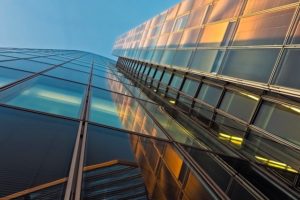Throughout history, copper alloys, particularly brass, have played a key role in the formation and realization of imaginative ideas by renowned architects from all over the world. There’s not a single major construction project that doesn’t make use of brass, be it for security hardware and ironmongery or for decorative and protective finishes. It has never lost its place in any blueprint, dominating details that complete architectural work.
It’s not difficult to understand why brass is a staple material in architecture. Here are some of the distinctive properties that brass is prized for:
-
Outstanding Color and Texture
– With the right mixture of copper, zinc, and other additives, you can produce brass that looks stunning and perfectly matches practically any architectural design. It can even come with a shade that rivals gold, which makes it a cheap yet amazing alternative to the expensive metal. When properly buffed, it will accept a mirror-like polish that lasts months on end.
-
High Corrosion Resistance
– Like other copper alloys, brass doesn’t rust. It tarnishes but it doesn’t develop patina too easily as well. Top copper suppliers like Rotax Metals even offer architectural brass angle and bar products that retain gloss for a long time without the need for regular polishing.
-
Malleable and Ductile
– Brass is a very flexible material. It can be produced into rod, profile, tube, plate, sheet, foil, and even wire. Something that you cannot do with most other metals. Simply put, brass materials can be used for a broader range of architectural applications, easily topping other common construction materials like steel and aluminum.
-
Ultra-Workable
– Thanks to its high malleability and ductility, brass also boasts of unparalleled workability. It can be cast, extruded, rolled, drawn, or even hot stamped more quickly than other metals. It also has excellent machining qualities, making it well-suited for manufacturing detailed machined parts.
-
Doesn’t Degrade When Exposed to Sunlight
– Undoubtedly, the sun is the most powerful force of nature. It can damage anything exposed to its ravaging UV rays for a long period of time. As it turns out, not everything is vulnerable to UV rays. Brass, for instance, does not degrade even after being left under the sun for too long. It won’t even soften or expand in temperatures lower than 200 degrees. When placed in a sub-zero environment, it won’t become brittle either.
With all these amazing properties, there’s no doubt that brass can perform well as an architectural material. In fact, it is so extensively used for this application that certain grades of brass are already classified as architectural. Meaning, they are being produced solely for architectural purposes. Specifically, here are some architectural elements that are best made of brass.
Door Knobs and Locks
Your door knobs and locks are some of the fixtures you don’t expect to replace throughout the life of your home. Therefore, they have to be made from a material that can last for decades and won’t easily break, especially because it plays a major role in your home’s security. Brass offers more than just longevity. It also has fine tolerances in machining and allows for smooth operation of moving parts. Some say brass is ideally suited for the production of all kinds of security hardware and ironmongery.
Handrails
There are two reasons for choosing brass as the main material for all your building’s handrails. One, brass is very easy to extrude, which is how most metal handrails are made. Another, its base metal is copper, which is known for its antibacterial property. Fixtures like handrails that you and your family frequently touch or hold can instantly harbor harmful bacteria. Using an antibacterial metal like brass can help prevent the spread of disease in your home.
Balustrades
Below the handrails are the balustrades, another special architectural element that appears and performs best when made of brass. Unlike handrails that are usually produced through extrusion, balustrade designs can be cast, formed, or fabricated using brazing and soft soldering techniques. All of these metalworking techniques work effectively when the metal to be worked has the properties of brass.
Decorative and Protective Finishes
Whether you want etched metal or plain plate covering for some of the surfaces in your building for finishing, brass can certainly be the perfect choice. There are modern decorative treatments for toning brass that you can use. You no longer have to stick to only a single tone or shade and try to adjust the rest of the design to match it. Brass can have a range of colors from gold-like yellow, through dull yellows and amber browns, to chocolate brown and black.
Having the right materials is key to the success of your architectural projects. Always check if any of the mentioned elements of your design are made of copper before incorporating them into the structure. Make sure to get them from one of the country’s most trusted brass suppliers, preferably one that specializes in copper alloys, such as Rotax Metals. That way, you will have more options to choose from and you can be sure that the products you will buy are all high-quality.



